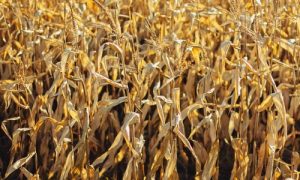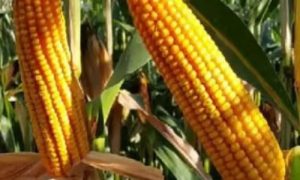Why area under maize has hit a plateau in Punjab, and why it is critical that it expands quickly

The sowing of kharif maize is currently ongoing in Punjab, but no major increase is expected in the area under the crop. Efforts by state governments over the past decade to increase the area under kharif maize have produced no noteworthy results. This raises some questions — including whether the possibility of expanding the cultivation of kharif maize still exists.
But first, why are we talking about kharif maize at this time?
Back in 2013, the SAD-BJP government of then Chief Minister late Parkash Singh Badal formulated a new agriculture policy to divert approximately 1.2 million hectares of land from paddy to high-value and alternative crops. It was proposed that kharif maize should be a major component of the crop diversification plan, and occupy around 5.5 lakh hectares (45%) of the land diverted from paddy.
The diversification plan was drawn up in the context of the severe depletion of groundwater in the state. As many as 102 of the state’s 141 agricultural development blocks were declared “dark zones”, in which the rate of groundwater depletion exceeded the rate of recharge, and water was available at depths of 200-300 feet (60-90 metres) or more, and could be extracted only by using deep tube wells.
The enormous increase in the area under paddy after the Green Revolution — going up from 2.93 lakh hectares in 1966-67 to 26.12 lakh hectares in 2000 and to a record 31.49 lakh hectares in 2020 — has led to rampant extraction of groundwater for irrigation. Paddy requires at least 4,000 litres of water to produce 1 kg of rice, and a report by the Central Ground Water Board (CGWB) had noted that as early as in 1999, the water table in 73 blocks (53%) of the state had slid into the dark/ overexploited zone.
Despite the efforts that began in 2013, however, the number of blocks designated as dark zones and critical zones has increased over the past decade to 116, and not a single hectare of land has been diverted from paddy to maize or other alternative crops. In fact, the area under paddy cultivation has witnessed an increase over the years.
And how will cultivating maize during the kharif season improve this situation?
This is because maize is considered one of the best alternatives to the water-guzzling paddy crop. Maize is cultivated twice a year in Punjab: the spring season crop is harvested in June and early July, and the kharif crop — which is considered the main maize crop in the state — is sown along with paddy, and has a similar duration to paddy.
Compared to the spring maize, which requires large amounts of water during May-June when the days are long, hot, and dry, kharif maize requires much less water, because it is sown during the rainy season. Spring maize is mainly grown in the potato belt districts of Jalandhar, Hoshiarpur, Nawanshahr, and Kapurthala, as well as in districts like Gurdaspur, Ropar, and Ludhiana.
So what has been the area under maize during the past decade?
According to Punjab Agriculture Department records, the area under maize has remained between 1.05 lakh hectares and 1.31 lakh hectares. It was recorded at 1.31 lakh hectares each in 2012-13 and 2013-14, which coincided with the implementation of the new policy to increase maize cultivation to 5.5 lakh hectares.
Thereafter, the area under maize consistently trended downward, from 1.26 in 2014-15 to 1.06 lakh hectares in 2022-23.
| Years | Area under maize cultivation in Punjab (in lakh ha.) |
| 2014-15 | 1.26 |
| 2015-16 | 1.27 |
| 2016-17 | 1.16 |
| 2017-18 | 1.15 |
| 2018-19 | 1.09 |
| 2019-20 | 1.07 |
| 2020-21 | 1.09 |
| 2021-22 | 1.05 |
| 2022-23 | 1.06 |
But why has the area under maize not expanded as planned?
It has got to do with a combination of factors, including the lower yield of maize per unit area of crop compared with paddy, and the lower price realisation for farmers compared with paddy.
Experts at Punjab Agricultural University (PAU), Ludhiana said that in 2021-22, with an area of 1.05 lakh hectares under kharif maize, the state produced 4.13 million tonnes of the crop, which works out to an average yield of 39.30 quintals per hectare (or 15.90 quintals per acre). This was significantly (more than 30%) less than the average potential yield of 57.48 quintals per hectare, the experts said.
In contrast, in that same year (2021-22), paddy occupied an area of 3.15 million hectares in Punjab, and the total production was 20.371 million tonnes (which worked out to 13.648 million tonnes of rice). The average yield of paddy was 64.78 quintals per hectare (26.22 quintals per acre).
Also, while the minimum support price (MSP) for maize was declared at Rs 1,962 per quintal, the MSP for paddy was higher — Rs 2,175 per quintal. In addition, paddy is procured by the government, whereas maize is mostly procured by private players, who pay prices that are 20%-30% below the government’s MSP.
Thus, there is no attractive incentive for farmers to increase the area under maize, as it cannot compete in terms of yield, price, and procurement with paddy.
What then can be done to increase the area under kharif maize?
Experts said the solution is suggested by the problem itself — which is, higher yields and higher prices for maize.
Kirpal Singh Musapur, an adviser to the Farmers Committee at PAU and a progressive farmer himself, grows both kharif and spring maize, but discourages spring maize cultivation due to its high water requirement.
Musapur suggests that during the summer season, sunflower and summer moong can be cultivated, if the government supports the initiative. Punjab needs both pulses and oilseeds, and summer moong and sunflower are the best alternatives to spring maize as the third crop. These crops consume less water and contribute to improving soil health, and should be encouraged, he said.
During the kharif season, the area under maize should be increased by developing good quality seeds, providing higher MSP than paddy, and by encouraging Punjab-based maize industries to procure maize from the state, Musapur said. He proposed that even if the government procures maize for one year, the area under the crop would increase automatically, because farmers themselves want to move away from paddy.
















